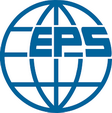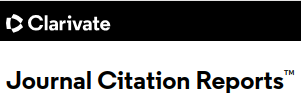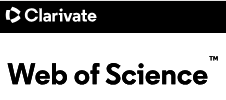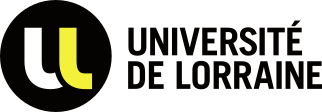Excluded volume effect of surfactant ligands on the shape of nascent nanocrystal
DOI:
https://doi.org/10.5488/cmp.28.23801Keywords:
nanocrystals, hard-sphere model, nanoplates, nanorods, Monte Carlo simulationAbstract
We investigate the effect of the excluded volume of surfactant ligands on the shape of incipient quantum dots (QDs) to which they are attached. We consider a model in which ligands are represented by hard-sphere particles that are bound to the surface of a nanoparticle (NC) that is cast in the shape of a prism. It is found in Monte Carlo simulations that the ensemble of relevant NC conformations consists of a small number of specific states that take on the form of nanoplates and nanorods. The shape of these states can be well described by the derived theoretical models. At increasing ligand density, the free energy of different states is seen to be approximately the same, suggesting that excluded volume interactions among ligands acts to narrow down the conformational space accessible to an NC without creating a statistical preference for any particular configuration.
References
Rainò G., Nedelcu G., Protesescu L., Bodnarchuk M. I., Kovalenko M. V., Mahrt R. F., Stöferle T., ACS Nano, 2016, 10, 2485–2490. DOI: https://doi.org/10.1021/acsnano.5b07328
Protesescu L., Yakunin S., Bodnarchuk M. I., Krieg, F., Caputo, R., Hendon C. H., Yang R. X., Walsh A., Kovalenko M. V., Nano Lett., 2015, 15, 3692–3696. DOI: https://doi.org/10.1021/nl5048779
Pan A., He B., Fan X., Liu Z., Urban J. J., Alivisatos A. P., He L., Liu Y., ACS Nano, 2016, 10, 7943–7954. DOI: https://doi.org/10.1021/acsnano.6b03863
Zhang B., Goldoni L., Zito J., Dang Z., Almeida G., Zaccaria F., de Wit J., Infante I., De Trizio L., Manna L., Chem. Mater., 2019, 31 (21), 9140–9147. DOI: https://doi.org/10.1021/acs.chemmater.9b03529
Akkerman Q. A., Nguyen T. P. T., Boehme S. C., Montanarella F., Dirin D. N., Wechsler P., Beiglböck F., Rainò G., Erni R., Katan C., Even J., Kovalenko M. V., Science, 2022, 377, 1406–1412. DOI: https://doi.org/10.1126/science.abq3616
Wang S., Yu J., Zhang M., Chen D., Li C., Chen R., Jia G., Rogach A. L., Yang X., Nano Lett., 2019, 19, 6315–6322. DOI: https://doi.org/10.1021/acs.nanolett.9b02436
Zhu H., Šverko T., Zhang J., Berkinsky D. B., Sun W., Krajewska C. J., Bawendi M. G., Nano Lett., 2022, 22, 8355–8362. DOI: https://doi.org/10.1021/acs.nanolett.2c03458
Scott R., Heckmann J., Prudnikau A. V., Antanovich A., Mikhailov A., Owschimikow N., Artemyev M., Climente J. I., Woggon U., Grosse N. B., Achtstein A. W., Nat. Nanotechnol., 2017, 12, 1155–1160. DOI: https://doi.org/10.1038/nnano.2017.177
Hikmet R. A. M., Chin P. T. K., Talapin D. V., Weller H., Adv. Mater., 2005, 17, 1436–1439. DOI: https://doi.org/10.1002/adma.200401763
Lhuillier E., Pedetti S., Ithurria S., Nadal B., Heuclin H., Dubertret B., Acc. Chem. Res., 2015, 48, 22–30. DOI: https://doi.org/10.1021/ar500326c
Yeltik A., Delikanli S., Olutas M., Kelestemur Y., Guzelturk B., Demir H. V., J. Phys. Chem. C, 2015, 119, 26768–26775. DOI: https://doi.org/10.1021/acs.jpcc.5b09275
Dede D., Taghipour N., Quliyeva U., Sak M., Kelestemur Y., Gungor K., Demir H. V., Chem. Mater., 2019, 31, 1818–1826. DOI: https://doi.org/10.1021/acs.chemmater.9b00136
Kelestemur Y., Shynkarenko Y., Anni M., Yakunin S., de Giorgi M. L., Kovalenko M. V., ACS Nano, 2019, 13, 13899–13909. DOI: https://doi.org/10.1021/acsnano.9b05313
Allen M. P., Tildesley D. J., Computer Simulation of Liquids, Oxford University Press, Oxford, second edn., 2017. DOI: https://doi.org/10.1093/oso/9780198803195.001.0001
DeVries P. L., A First Course in Computational Physics, John Wiley & Sons, Inc., Oxford, 1993.
Qi W., Dijkstra M., Soft Matter, 2015, 11, 2852–2856. DOI: https://doi.org/10.1039/C4SM02876G
Downloads
Published
Issue
Section
Categories
License
Copyright (c) 2025 A. Baumketner, D. Anokhin, Ya. Patsahan

This work is licensed under a Creative Commons Attribution 4.0 International License.


















